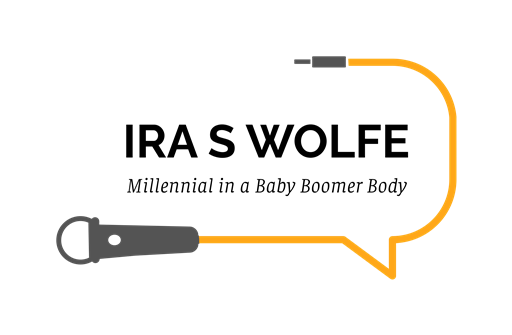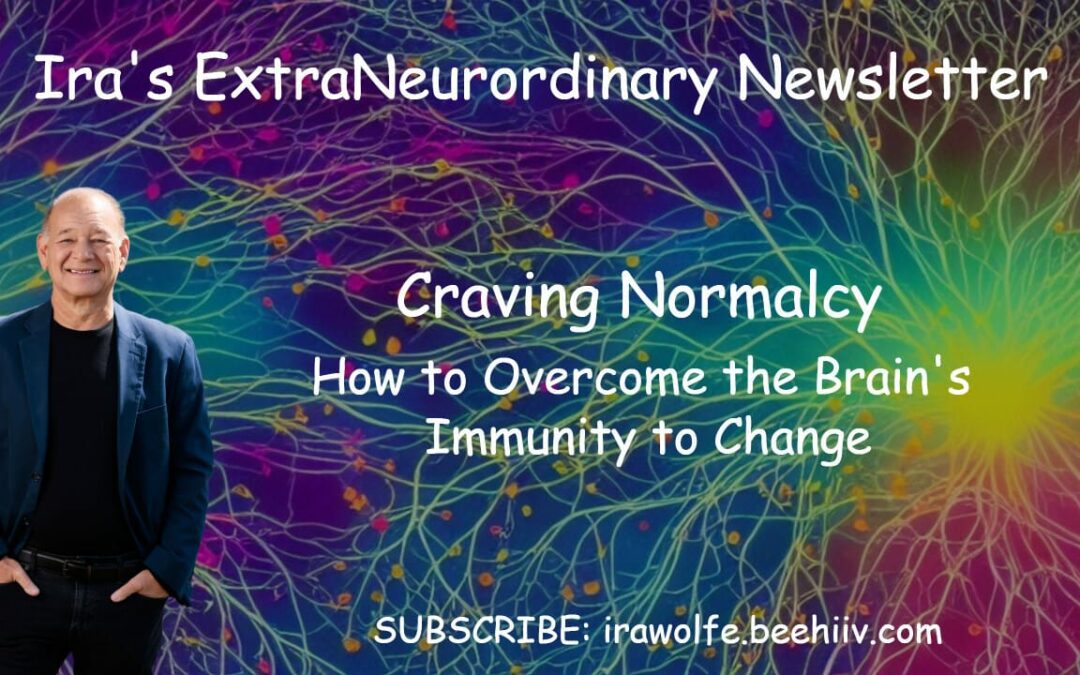Ever since the start of the COVID-19 pandemic, there’s been a palpable human craving to get back to “normal.” Our routines were upended, and the familiar comfort of our daily lives was replaced with uncertainty and change at a pace and scale we’d rarely, if ever, experienced. According to neuroscience, our longing for the pre-pandemic world isn’t just about nostalgia; it’s rooted in a fundamental aspect of our brain function—an addiction to certainty. This addiction represents our brain’s preference for predictable, known quantities and its aversion to the stress and anxiety that can come with unpredictability.
Immunity to Change: The Other Side of the Neurologic Coin
Immunity to change, at first, might seem like a good thing. And it is … sort of. It’s our brain’s inherent resistance to altering established habits or adapting to new situations, even when doing so could lead to better outcomes. It’s a protective mechanism, designed to keep us safe from perceived threats and uncertainties.
However, this same mechanism can be the culprit that sometimes holds us back, preventing us from embracing necessary changes or seizing new opportunities.
Fortunately, amidst this complex interplay of longing for the past and resisting the new, lies perhaps the most remarkable trait of the human brain: its ability to adapt and grow. This adaptability is grounded in the concept of neuroplasticity—the brain’s capacity to form new neural connections throughout life. It enables us to learn from new experiences, to adjust our strategies in the face of challenges, and ultimately, to thrive in changing environments.
The COVID-19 pandemic, with all its disruption, has underscored the importance of this ability to adapt. While our “addiction to certainty” and “immunity to change” are normal reactions to the unprecedented changes we’ve faced, they are not insurmountable barriers. By understanding these neural mechanisms, we can better navigate our response to change, harnessing our innate adaptability to not just return to a sense of normalcy but to grow and evolve in ways we might never have imagined before the pandemic.
Decoding Our Brain’s Response to Change and Uncertainty
Here’s a simplified breakdown of the complex interplay of brain structures involved in these processes:
The Brain’s Reward System and Certainty
Our brains have a reward system, primarily the dopaminergic pathways, which includes areas like the ventral tegmental area (VTA) and the nucleus accumbens. This system releases dopamine, a neurotransmitter associated with pleasure and satisfaction, when we engage in behaviors that the brain perceives as beneficial for our survival. Familiar and predictable situations can trigger this reward response because they are perceived as safe and risk-free, reinforcing our “addiction to certainty.”
The Amygdala and Fear Response
The amygdala plays a crucial role in processing emotions, especially fear and anxiety. When faced with uncertainty or potential change, the amygdala can activate a fear response. This is part of our “immunity to change,” where the brain signals that something unfamiliar might be dangerous, prompting us to stick to what we know.
The Prefrontal Cortex and Decision Making
The prefrontal cortex is involved in higher-order functions such as decision-making, problem-solving, and controlling social behavior. It’s also where we can rationalize our fears of the unknown and weigh the pros and cons of change. However, when the emotional response from the amygdala is strong, it can overshadow the logical reasoning of the prefrontal cortex, making it harder to embrace change.
Habit Loops and the Basal Ganglia
The basal ganglia play a significant role in the formation of habits and routine behaviors. Once a behavior becomes a habit, the basal ganglia help execute it with little to no conscious thought, making familiar actions feel effortless. This efficiency is beneficial for survival but can also reinforce our resistance to change when those habits become part of our “certainty addiction.”
Neuroplasticity and Overcoming Resistance
Neuroplasticity is the brain’s ability to reorganize itself by forming new neural connections throughout life. This ability is crucial for overcoming our “immunity to change.” By exposing ourselves to new experiences and consciously practicing new behaviors, we can rewire our brains to become more comfortable with uncertainty and more adaptable to change.
This is simply brilliant!
FEATURED PODCAST: MINDSET MATTERS – WHAT IS MINDSET?
Everywhere you turn, everyone is talking about the importance of mindset. It’s touted as the cornerstone of success, the crux of failure. Yet, ask for a concrete definition, and you’ll be swamped by a sea of varying descriptions. But not anymore. Neuroscientist Jean Gomes nailed it on our most recent Geeks, Geezers, and Googlization Show Podcast with a brilliant but simple defintion.
What do you think? Agree or disagree? Do you have an alternative definition that makes sense for you? Please share!
You can watch the full interview here: YouTube Link or listen to on your favorite podcast.
If you’re on Instagram, let’s connect!
Did you know that Geeks Geezers and Googlization Show is now available on ROKU and FamTV+?
Thanks for joining me again as I continue my myth-busting journey through the fascinating labyrinth of the human brain. I hope you’re enjoying my newsletter and series on debunking neuro-management myths enough to share this with just two colleagues. If you’re not ready to do so, please let me know what I need to do to get there!
And of course, if you haven’t subscribed yet, please click here.

